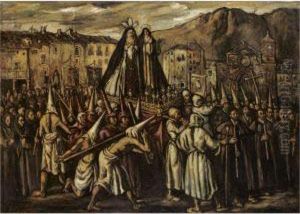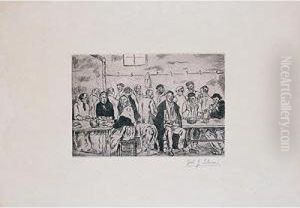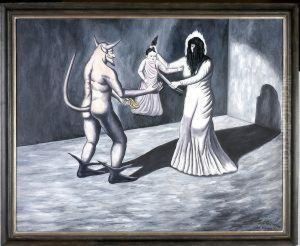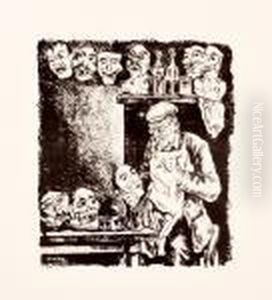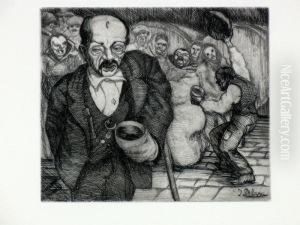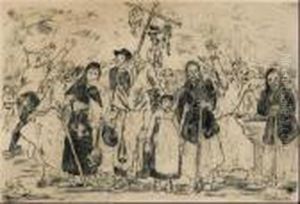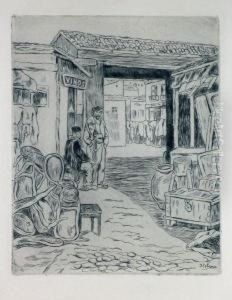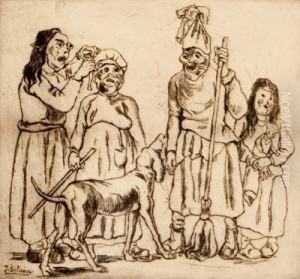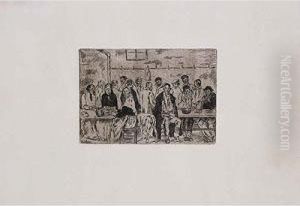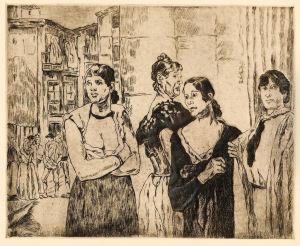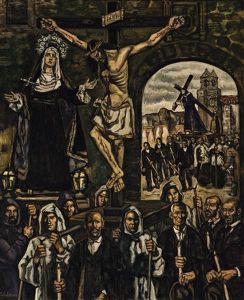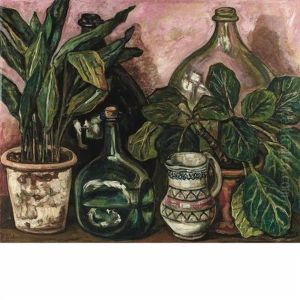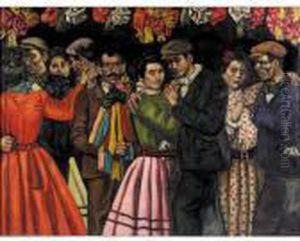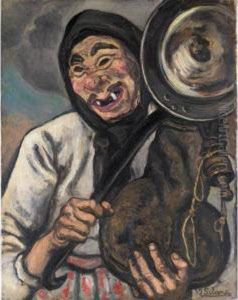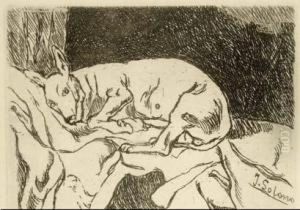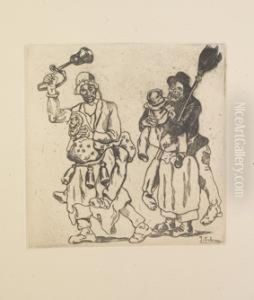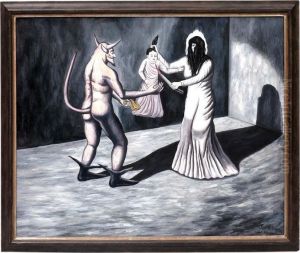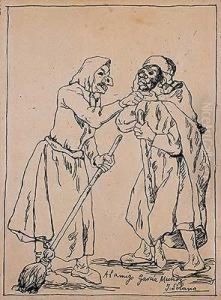Jose Gutierrez Solana Paintings
José Gutiérrez Solana was a Spanish painter and writer renowned for his depictions of the darker aspects of Spanish culture and society. Born on February 28, 1886, in Madrid, Spain, Solana grew up in a period of great cultural activity in Spain that included the 'Generation of '98', a group of writers who were deeply affected by Spain's defeat in the Spanish-American War and the subsequent crisis of identity in the country.
Solana was largely self-taught as an artist, and his work was heavily influenced by the Black Paintings of Francisco Goya. His palette was often subdued, and his subject matter included scenes of the Spanish underworld, cabarets, brothels, and the marginalized figures of society, such as beggars and prostitutes. His style was marked by a certain roughness and a focus on capturing the essence of his subjects rather than adhering to strict realism.
Aside from painting, Solana was also an accomplished writer and chronicler of Madrid's low life. His two main written works are 'Madrid, escenas y costumbres' (Madrid, Scenes and Customs) and 'La España negra' (The Black Spain), both of which offer insights into the less glamorous aspects of Spanish life and complement his painted works.
During his lifetime, Solana's work was not widely appreciated, and he remained relatively obscure. However, after his death on June 24, 1945, his work began to receive more recognition for its unique perspective and its raw, expressive power. Today, José Gutiérrez Solana is considered an important figure in Spanish art, and his works are held in high regard for their uncompromising portrayal of the human condition and the idiosyncrasies of Spanish culture.
